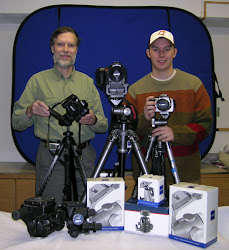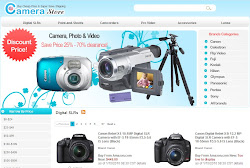I have spent much time working with and thinking about digital SLR technology of late. The digital revolution has been quite the learning process and throughout I've tried to determine whether digital capture meets my specific needs. What I am after is generally a print of 16x20" or less, very sharply rendered in saturated color or shades of grey with extensive dynamic range and a small / tight grain pattern. I've been able to achieve this regularly with film equipment and I'd like to be able to do the same with digital.
Trying to determine whether digital makes sense for my purposes, I made a study of the available technical literature on the subject. Oh yeah, you'll learn a lot about pixel packing, modulation transfer functions, tone stepping, digital noise and how these things affect image quality in the digital picture making process. There is also an endless trove of material on how small format digital stacks up against film equipment.
Technical reports are great, but for me it comes down to how prints look in their final form. In other words, I don't care how things get done, I just want a beautiful print that expresses my vision, whatever that might be. I've learned quite a bit along the way and think I now have a handle on the main points. From a purely subjective viewpoint, here's some (highly personal) observations of how things stack out in my world.
In Favor of Digital:
Small format camera that does not require consumables, is fast to use and produces prints that are reasonably sharp and coherent up to about 5x7".
Within limits, what you see on the preview screen is what you've captured on the memory card. This one feature alone explains why virtually every wedding photographer on the planet uses digital. Where shooting speed and 'getting the shot' is the overriding concern, digital is king.
Availability of a wide range of lenses with nifty features such as wide zoom range, auto focus and image stabilization.
No hassles with airport x-ray screening devices. Travel anywhere in the world with no worries about fogged film.
Quick upload of images to web-based image sharing sites or printing services. Digital was made for the web! Even a middling good digital file looks fabulous on a monitor.
If you shoot RAW files, color correction is a snap-assuming you know what you're doing. The ability to do post-capture image management with software is unrivaled by the darkroom and does not require years of effort to perfect.
Problems with Digital:
Equipment obsolescence is rampant and costs for good equipment are quite high. Due to rapid advances in signal capture and processing expect to replace your camera body every three years, it's monetary and technical value will be near zero at that time.
The image sensor gets dirty quite often and requires careful cleaning with expensive supplies or a trip to the repair department for $65 a pop. The sensor is especially vulnerable to gunk when lubricants on the moving parts of the camera get splashed around. Lens changes invite dust into the camera body.
Short format lenses do not make it easy to systematically control depth of field effects. Everything is in focus, whether you want it that way or not.
Lenses must be of extremely high quality (read: expensive) to produce good results. Defects of consumer level optics are readily apparent when critically reviewing work prints.
Prints tend to look artificially sharp due to edge contrast effects giving a rather sterile look that I find unpleasant.
Dynamic range of sensor and processing electronics is very poor compared to film. Bright areas tend to 'burn out' rather easily requiring very careful exposure control. Technical fixes such as graduated neutral density filters or 'highlight recovery' manipulation in the image editing process is often required to manage normal contrast. Shooting in contrasty daylight is a real challenge.
Current lack of a world-wide standard file format suggests that today's files may not be as archival as film based systems. File archiving and storage safety are also issues.
Summary: I believe that a high quality digital SLR fitted with a pro-grade lens is a close APPROXIMATION of a replacement for a 35mm film camera using slow color or black and white film. Further, it needs to be kept in mind that producing a really good quality digital image is not a simple matter of point and shoot. Due to the reduced dynamic range of the electronic sensor compared to film, lighting must be carefully controlled either by shooting multiple frames for high-dynamic-range processing, using a neutral density grad filter to control sky values, modeling available light with reflectors or fill flash and other techniques not likely to be used by your average shooter.
As to whether a digital SLR can compete with a 120 roll film camera or a 4x5 view camera, all you have to do is look at a set of equal sized test prints. 120 and 4x5 film produces prints that have a presence and depth that the digital SLR cameras don't even begin to touch.
Tags : Cheap Handbags4u







0 comments:
Post a Comment